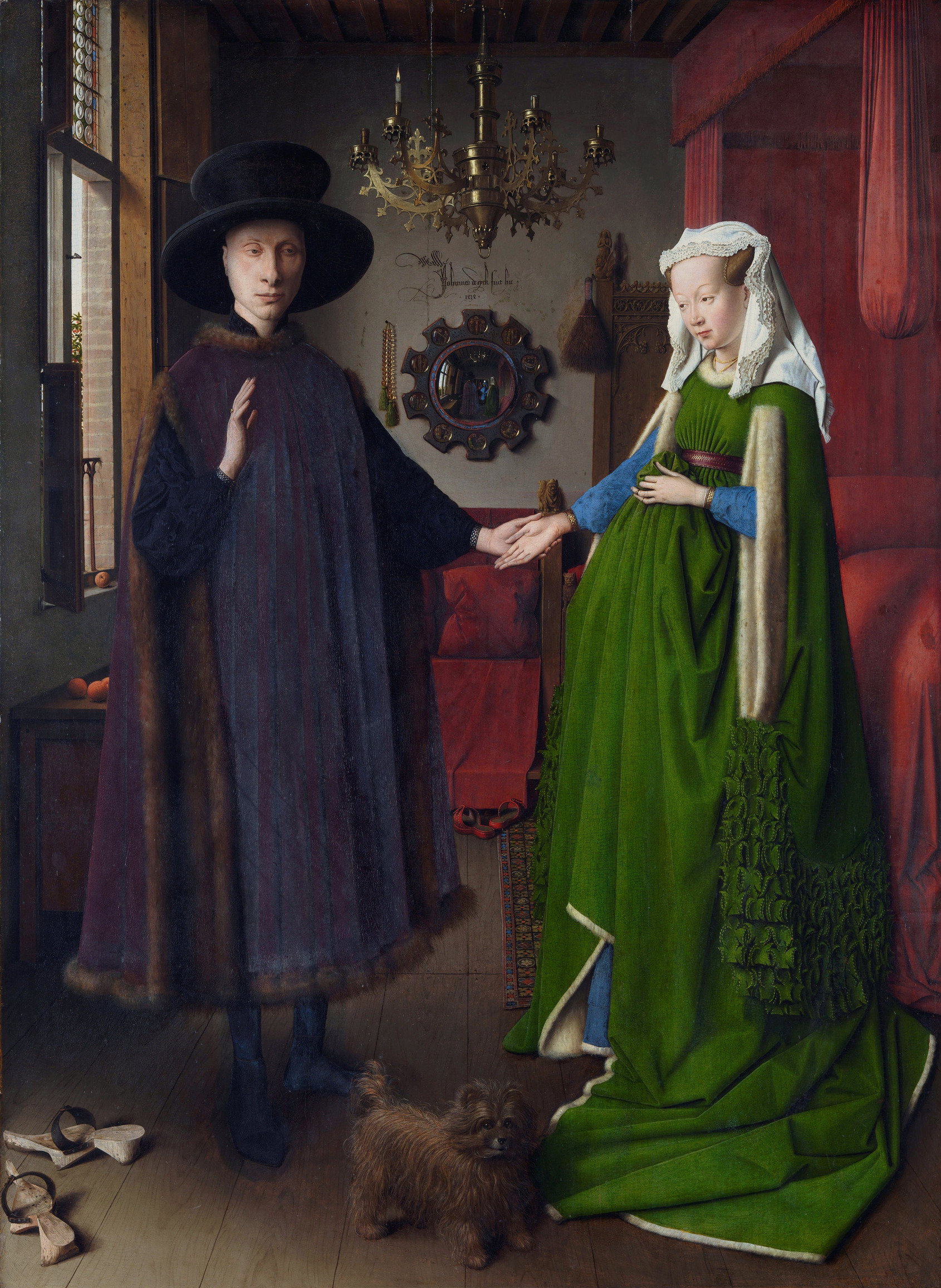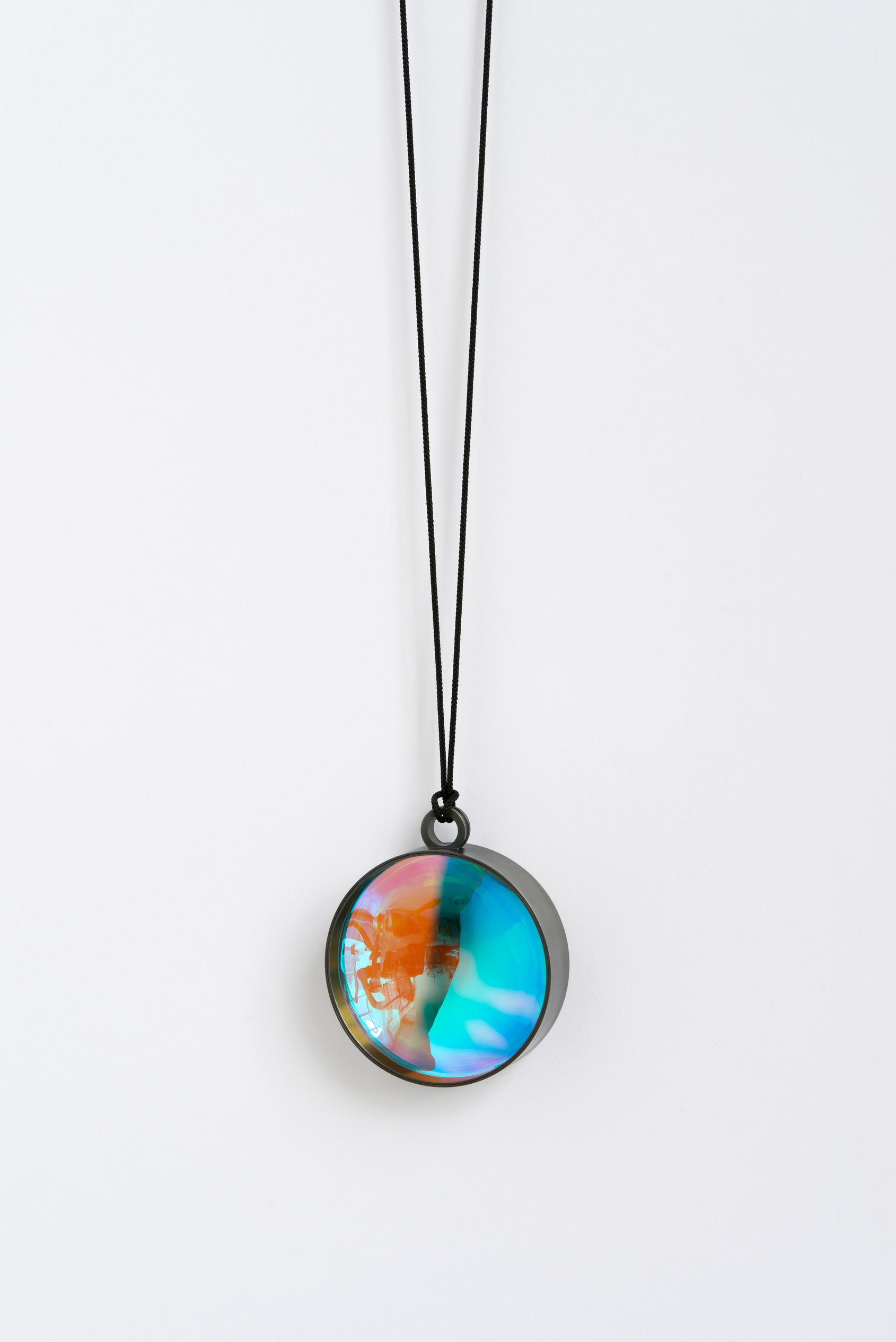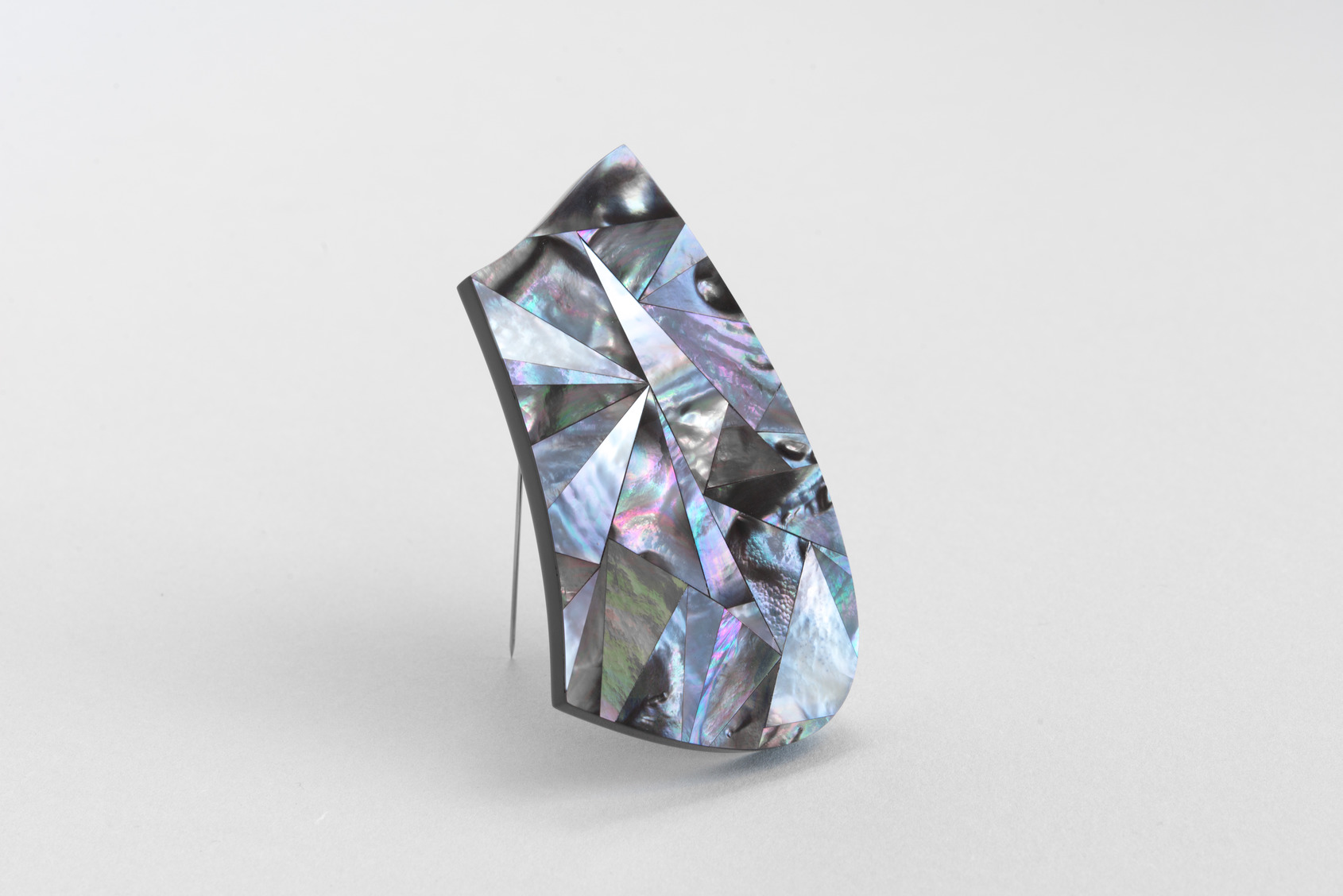
Throughout the canon of art history, the gold standard of academic symbolic analysis is The Arnolfini Portrait by Netherlandish artist Jan van Eyck in 1434. In Art History 101, it is perhaps the most written about painting, allowing for students of all ages to ponder the layers of meanings of the objects strewn about the room, as well as the manner in which the work is painted.
The portrait depicts an italian merchant and his wife, standing and clasping hands in a lavish bedroom, a furry four-legged companion at their feet. Dogs symbolize fidelity and loyalty; that’s an easy one. The convex mirror that hangs on the wall directly between their heads is a bit more nuanced. Many have proposed that the mirror symbolizes God’s all-seeing eye. The very room the couple stands in is expertly rendered (a scientific and mathematical feat to have accomplished in 1434) with optical precision, but also reveals the truth: the actual painter of the scene, the artist Jan van Eyck, is visible at the very center of the rounded glass.
Many researchers, professors, and students have taken this to mean that mirrors and lenses are truth-revealers, the eyes of the heavens with unerring gazes that seek out the unbiased facts of the universe, and share them with the world. Cameras and photographs accomplish this as well, capturing a snapshot moment in time that can never be recreated in the exact same way. But when lenses and optical tools are divorced from their usual contexts, what power do they have to reveal the truth about, say, a wearer?
Now, at this point, one might be wondering how does this relate to jewelry, and specifically, the work of Jiro Kamata? Over the decades, Kamata’s work has constantly explored the use of lenses, glass, mirrors, and other reflective surfaces (most recently, the iridescent and murky surface of mother of pearl).
Many unanswerable questions may rise to the surface: Do camera lenses facilitate the capturing of souls? Do mirrors reflect the innermost secrets of the beholder, or merely the unbridled truth? When adorned with these jewels, are we meant to see, or be seen?
When these ideas become physical, transcending paper and paint into objects of adornment, a similar effect can be had. In Madeline Albrecht book, Read my Pins, she says that she chose to wear particular brooches during her political meetings in order to convey messages of strength, patriotism, compassion, or a myriad of other subtle emotions. If one is choosing a Jiro Kamata jewel, what message is being conveyed?
The BI series consists of lenses with dichromate flares of color, and concave mirrors set inside. They are pendants, rings, and necklaces set in blackened silver, and have the appearance of lenses from otherworldly cameras.
The materials of choice for Kamata have a storied history in jewelry canon, as well. René Boivin worked with small squares of mirrors in 1935. Some of these mirrors were tinted gold, and some were silvery chrome. The jewels resemble Art Deco disco balls, sending small squares of reflected light dancing all around a ballroom or gala. The necklaces and bracelets feature paved roads of mirror, illuminating jawlines and gestures. In the context in which these jewels were created, they would be breaking barriers of fine jewelry, and bringing in the industrial materials of the machine age into a glamourous setting. Kamata’s jewelry has a similar sophistication in terms of materials, elevating silver and glass beyond utilitarian functions.
Glass in jewelry can be traced through the millenia, from ancient jewelry to Alexander Calder setting gemmy chunks of sea glass in his sterling silver sculpture-cum-jewelry. In the era of the Art Nouveau style, René Lalique worked with glass in his naturalistic inspired works of art. Roses, insects, birds, and many other natural forms abound in his jewels. The lens in Kamata’s work is a not only glass, it is an optical and scientific tool that bends light and dissolves colors when held and moved in one’s hand. When looking into the depths of a Kamata lens, the futuristic world to come may spring to mind, but also the storied past and history of the lens.
Just as The Arnolfini Portrait has a significant presence of a mirror, or a lens unto the real world, many paintings acknowledge the presence of lenses without actually depicting them. One of my fondest memories from my undergraduate art history studies was attending a lecture on the history of lenses used in the creation of paintings, as given by an optical physicist who had partnered with David Hockney. Hockney is a British artist whose work recently broke a world record for highest auction sale for a living artist. He’s known for his dreamy LA poolscapes, and often depicts the way light bends through the electric aqua waves. Hockney and the scientist had banded together and been able to discern the earliest date that lenses had been used by artists in Europe.
For example, if a Dutch still life depicted a Persian rug draped over a sideboard, the foreshortening of the intricate pattern of the weaving could not be painted in such a way without the use of a lense. Similarly, it’s been posited that Vermeer was able to paint intricate details in his work out of focus because he used the aid of a camera obscura when painting. The naked eye would not be able to this. Thus, this scientist and Hockney were able to determine some of the earliest dates of handmade lenses and their use in the creation of art.
Kamata is creating lenses anew, and also bridging gaps that more conventional jewelry material (such as gemstones) cannot accomplish. The color spectrum that the mirrors and lenses create are far more vast than any one gemstone could ever achieve, and the appearance of two opposing colors out of the ether is stirring.
The Mother series, brooches made of shards of mother of pearl smoothed to perfection in amorphous shapes, has no defined reflections, but displays endless depth and disruption of light on the wearer. I was surprised by the vividness of the colors that emerged from the natural material, as it seemed so much more intense than merely observing a natural piece of mother of pearl. The jigsaw layout of the piece interrupts the flowing lines of nacre, and creates segments of oil slick blues, purples, silver, and bright white that jar with each other where the pieces join.
I’m reminded of the eggshells lacquer used in French Art Deco jewelry, enameled into the surfaces of compacts and cigarette cases, creating a cobblestone pattern of white scales inlaid into the surface. Or Middle Eastern decorative arts with miniscule triangles of mother of pearl set into boxes, trays, and other utilitarian objects embellished with geometric precision.
In essence, context is everything and all sorts of references can be dug up for any given material or trope. Kamata works well to slyly nod to these references, but also explore new terrain in the jewelry world. His lenses, mirrors, and mother of pearl feel fresh and exciting because they evoke a scientific wonderment that is only rivaled by actual magic. The wearer of Kamata’s pieces can equally look, or be looked at. The manner in which his pieces are displayed when not being worn invites onlookers to examine themselves when catching reflections in the mirrors or lenses hung on a wall. Ultimately, with Kamata’s work the push and pull between the realms of observing and being observed is constantly re-examined, remade, and refined into innovative new jewelry.
"The Arnolfini Portrait" , 1434 by Jan Van Eyck © Jiro Kamata
BI 2, 2018-19 © Jiro Kamata
Mother, 2018 © Jiro Kamata

"The Arnolfini Portrait" , 1434 by Jan Van Eyck © Jiro Kamata

BI 2, 2018-19 © Jiro Kamata

Mother, 2018 © Jiro Kamata